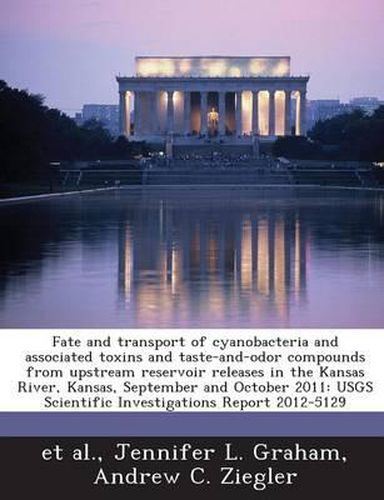Readings Newsletter
Become a Readings Member to make your shopping experience even easier.
Sign in or sign up for free!
You’re not far away from qualifying for FREE standard shipping within Australia
You’ve qualified for FREE standard shipping within Australia
The cart is loading…






Cyanobacteria cause a multitude of water-quality concerns, including the potential to produce toxins and taste-and-odor compounds. Toxins and taste-and-odor compounds may cause substantial economic and public health concerns and are of particular interest in lakes, reservoirs, and rivers that are used for drinking-water supply, recreation, or aquaculture. The Kansas River is a primary source of drinking water for about 800,000 people in northeastern Kansas. Water released from Milford Lake to the Kansas River during a toxic cyanobacterial bloom in late August 2011 prompted concerns about cyanobacteria and associated toxins and taste-and-odor compounds in downstream drinking-water supplies. During September and October 2011 water-quality samples were collected to characterize the transport of cyanobacteria and associated compounds from upstream reservoirs to the Kansas River. This study is one of the first to quantitatively document the transport of cyanobacteria and associated compounds during reservoir releases and improves understanding of the fate and transport of cyanotoxins and taste-and-odor compounds downstream from reservoirs. Milford Lake was the only reservoir in the study area with an ongoing cyanobacterial bloom during reservoir releases. Concentrations of cyanobacteria and associated toxins and taste-and-odor compounds in Milford Lake (upstream from the dam) were not necessarily indicative of outflow conditions (below the dam). Total microcystin concentrations, one of the most commonly occurring cyanobacterial toxins, in Milford Lake were 650 to 7,500 times higher than the Kansas Department of Health and Environment guidance level for a public health warning (20 micrograms per liter) for most of September 2011. By comparison, total microcystin concentrations in the Milford Lake outflow generally were less than 10 percent of the concentrations in surface accumulations, and never exceeded 20 micrograms per liter.
$9.00 standard shipping within Australia
FREE standard shipping within Australia for orders over $100.00
Express & International shipping calculated at checkout
Stock availability can be subject to change without notice. We recommend calling the shop or contacting our online team to check availability of low stock items. Please see our Shopping Online page for more details.
Cyanobacteria cause a multitude of water-quality concerns, including the potential to produce toxins and taste-and-odor compounds. Toxins and taste-and-odor compounds may cause substantial economic and public health concerns and are of particular interest in lakes, reservoirs, and rivers that are used for drinking-water supply, recreation, or aquaculture. The Kansas River is a primary source of drinking water for about 800,000 people in northeastern Kansas. Water released from Milford Lake to the Kansas River during a toxic cyanobacterial bloom in late August 2011 prompted concerns about cyanobacteria and associated toxins and taste-and-odor compounds in downstream drinking-water supplies. During September and October 2011 water-quality samples were collected to characterize the transport of cyanobacteria and associated compounds from upstream reservoirs to the Kansas River. This study is one of the first to quantitatively document the transport of cyanobacteria and associated compounds during reservoir releases and improves understanding of the fate and transport of cyanotoxins and taste-and-odor compounds downstream from reservoirs. Milford Lake was the only reservoir in the study area with an ongoing cyanobacterial bloom during reservoir releases. Concentrations of cyanobacteria and associated toxins and taste-and-odor compounds in Milford Lake (upstream from the dam) were not necessarily indicative of outflow conditions (below the dam). Total microcystin concentrations, one of the most commonly occurring cyanobacterial toxins, in Milford Lake were 650 to 7,500 times higher than the Kansas Department of Health and Environment guidance level for a public health warning (20 micrograms per liter) for most of September 2011. By comparison, total microcystin concentrations in the Milford Lake outflow generally were less than 10 percent of the concentrations in surface accumulations, and never exceeded 20 micrograms per liter.